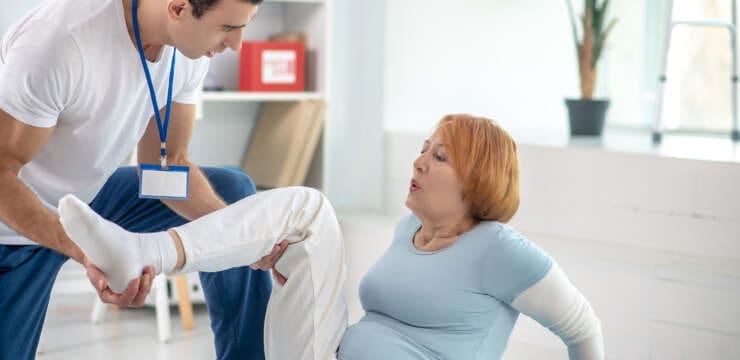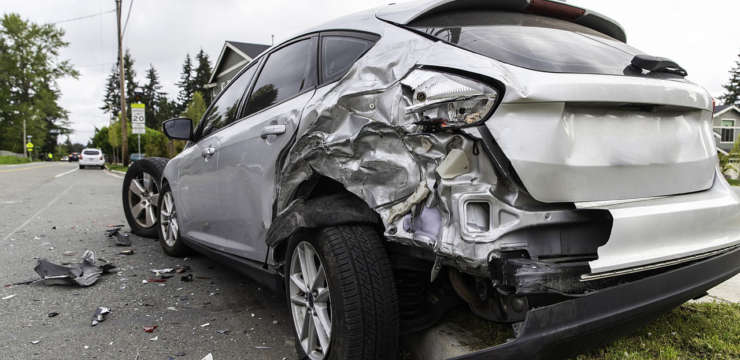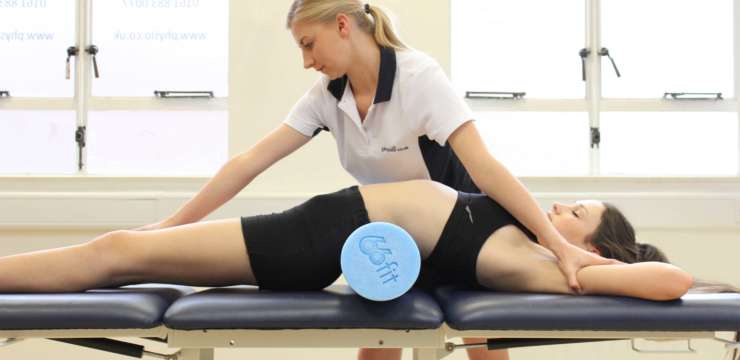
Explore the effectiveness of cervical collars for whiplash injury recovery and support after an MVA for health and wellness.
Table of Contents
Whiplash Injuries and the Cervical Spine: A Comprehensive Guide to Motor Vehicle Accident Recovery
Introduction: The Whiplash Wobble—What’s Going On?
Picture this: you’re stopped at a red light, singing along to your favorite tune, when—BAM!—a car rear-ends you. Suddenly, your neck feels like it’s auditioning for a Slinky toy commercial, bending in ways it definitely shouldn’t. Welcome to the world of whiplash, a common injury from motor vehicle accidents (MVAs) that can turn your day from harmonious to hazardous in a split second. Whiplash isn’t just a catchy term; it’s a real neck injury that can cause pain, stiffness, and a whole lot of frustration.
In this comprehensive guide, we’ll dive into the nitty-gritty of why whiplash happens, how it affects your cervical spine (that’s the fancy name for your neck bones), and whether those foam cervical collars are your friend or foe. We’ll also spotlight Dr. Alexander Jimenez, a rockstar chiropractor and nurse practitioner in El Paso, Texas, who’s helping accident victims get back on their feet. Plus, we’ll explore why personal injury cases are a big deal in El Paso and how Dr. Jimenez bridges the gap between medical care and legal support. Buckle up (safely, of course) for an informative ride with a sprinkle of humor to keep things light!
References
- Physiopedia. (n.d.). The Biomechanics Behind Whiplash Associated Disorder. Retrieved from www.physio-pedia.com/The_Biomechanics_Behind_Whiplash_Associated_Disorder
The Biomechanics of Whiplash: Why Your Neck Takes a Wild Ride
Let’s break down the science behind whiplash, and don’t worry—we’ll keep it as simple as explaining why you shouldn’t text and drive. When a car gets hit from behind, it’s like the universe decided to play a high-speed game of bumper cars. The impact pushes your car forward, and your body, strapped into the seat, goes along for the ride. But your head? It’s not glued to the seat, so it stays put for a split second due to inertia (think of Newton’s first law, the one about objects liking to stay still unless forced otherwise).
This lag causes your neck to snap backward (hyperextension) and then whip forward (hyperflexion), all in less than a quarter of a second—faster than you can say “ouch!” According to research, this rapid motion happens in three distinct stages:
- Initial Flexion: Your upper and lower cervical spine flexes, flattening the natural curve of your neck (called lordosis). It’s like your neck is trying to do a bad yoga pose under pressure.
- S-Shaped Curve: The lower part of your neck starts to extend while the upper part is still flexing, creating an awkward S-shape. This is where things get dicey, as the neck isn’t built for this kind of contortion act.
- Full Extension and Flexion: Your entire neck extends backward, then snaps forward, putting stress on various structures like muscles, ligaments, and those tiny facet joints that help your neck move smoothly.
These movements can stretch or tear soft tissues, compress or irritate facet joints, and even affect nerves or discs. The facet joints, in particular, are a common source of pain, as they can get squished or overstretched during this roller-coaster-like motion. Studies also suggest that at higher impact speeds, injuries may shift to the upper cervical spine, increasing the risk of more severe damage.
To give you a sense of the forces involved, imagine your head as a bowling ball (about 10-12 pounds) being yanked around on a stick (your neck). That’s a lot of stress for a relatively delicate structure! Understanding these biomechanics helps explain why even low-speed collisions can leave you feeling like you’ve been through a wrestling match with a gorilla.
Table 1: Stages of Whiplash Biomechanics
| Stage | Description | Potential Injuries |
|---|---|---|
| Initial Flexion | Upper and lower spine flex, losing natural neck curve. | Muscle and ligament strain. |
| S-Shaped Curve | The lower spine extends, while the upper spine flexes, forming an S-shape. | Facet joint compression, ligament stretching. |
| Full Extension/Flexion | The neck fully extends backward, then flexes forward. | Facet joint damage, disc injury, nerve irritation. |
References
- Physiopedia. (n.d.). The Biomechanics Behind Whiplash Associated Disorder. Retrieved from www.physio-pedia.com/The_Biomechanics_Behind_Whiplash_Associated_Disorder
- Siegmund, G. P. (2002). The biomechanics of whiplash injury. British Columbia Medical Journal. Retrieved from bcmj.org/articles/biomechanics-whiplash-injury
Impact on the Cervical Spine: When Your Neck Says “No More!”
The cervical spine is like the unsung hero of your body—flexible enough to let you turn your head to check your blind spot, but vulnerable when a car accident throws it into chaos. Whiplash can cause a range of injuries, from mild to “call the surgeon” serious. Here’s a rundown of what might happen to your neck:
- Soft Tissue Damage: The muscles and ligaments that support your neck can become stretched or torn, resulting in pain and stiffness. Think of them as the rubber bands holding your neck together—stretch them too far, and they don’t snap back quite right.
- Facet Joint Injuries: These small joints between your vertebrae can get compressed or irritated, causing localized pain or even radiating discomfort. They’re like the hinges on a door that get jammed during a crash.
- Disc Injuries: The cushiony discs between your vertebrae can bulge or herniate, potentially pressing on nerves and causing pain, numbness, or weakness in your arms.
- Nerve Root Irritation: If the nerves exiting your spine get pinched or inflamed, you might feel tingling or shooting pain down your arms, like an electric shock from a faulty wire.
- Severe Injuries (Rare): In high-impact crashes, you could face fractures, dislocations, or spinal cord compression, which are medical emergencies requiring immediate attention.
A medical policy document highlights conditions like hyperextension injuries, facet dislocations, and spinal cord compression as potential outcomes of cervical spine trauma from MVAs, some of which may need surgical fixes like discectomy or fusion. Thankfully, most whiplash cases involve less severe soft tissue injuries, but they can still make daily life a pain in the neck—literally.
Chronic pain is a common issue, especially when facet joints or nerves are involved. Research shows that many whiplash patients experience ongoing discomfort due to these structures, even when X-rays or MRIs don’t show obvious damage. This is why proper diagnosis and treatment are crucial to prevent long-term issues.
Table 2: Common Cervical Spine Injuries from Whiplash
| Injury Type | Description | Symptoms |
|---|---|---|
| Soft Tissue Damage | Stretched or torn muscles/ligaments. | Neck pain, stiffness, reduced mobility. |
| Facet Joint Injury | Compression or irritation of small spinal joints. | Localized pain, radiating discomfort. |
| Disc Injury | Bulging or herniated discs pressing on nerves. | Pain, numbness, and weakness in the arms. |
| Nerve Root Irritation | Pinched or inflamed spinal nerves. | Tingling, shooting pain, weakness. |
| Fractures/Dislocations | Broken or misaligned vertebrae (rare). | Severe pain, neurological deficits. |
References
- Blue Cross Blue Shield of North Carolina. (n.d.). Cervical Spine Procedures. Retrieved from storage.googleapis.com/msgsndr/f7MqhebiCT4QYAjutsvR/media/672272997263193d86964948.pdf
- Siegmund, G. P. (2002). The biomechanics of whiplash injury. British Columbia Medical Journal. Retrieved from bcmj.org/articles/biomechanics-whiplash-injury
The Role of Cervical Collars: Friend, Foe, or Sci-Fi Fashion?
After a car accident, you may be given a cervical collar and instructed to wear it to keep your neck stable. It’s like being cast as an extra in a sci-fi movie, complete with a futuristic neck brace. But here’s the twist: recent research suggests that for most whiplash cases, these collars might do more harm than good.
A study cited by the El Paso Chiropractor blog found that people with whiplash recovered better without cervical collars. The Mexican Institute of Social Security studied 100 patients, with 68% using collars and anti-inflammatory drugs, and 32% using only medication. Those without collars had better outcomes, and 15% of those who didn’t miss work admitted to ditching the brace altogether—probably because it’s hard to look cool in a foam neck pillow.
A 2008 meta-analysis supported this, suggesting that prolonged collar use can lead to muscle degeneration and decreased function due to inactivity. It’s like putting your neck in a timeout—it forgets how to move properly. Instead, active treatments like chiropractic care, gentle stretches, and exercises are recommended. One study even showed that chiropractic treatment improved symptoms in 93% of whiplash patients, making it a go-to option for recovery.
However, cervical collars aren’t entirely useless. They’re critical for severe injuries like spinal fractures or dislocations, where keeping the neck still prevents further damage. So, while they might not be the best fashion statement for most whiplash cases, they have their place in the medical toolbox.
Table 3: Cervical Collars vs. Active Treatment
| Treatment | Pros | Cons |
|---|---|---|
| Cervical Collar | Stabilizes the neck and prevents further injury in cases of fracture. | May prolong pain, cause muscle degeneration. |
| Active Treatment | Promotes healing, improves mobility, and reduces pain. | Requires professional guidance and gradual progression. |
References
- El Paso Chiropractor. (2016, June). Cervical Collars and Whiplash. Retrieved from www.elpasochiropractorblog.com/2016/06/cervical-collars-and-whiplash.html
The Non-Surgical Approach To Wellness- Video
Clinical Insights from Dr. Alexander Jimenez: El Paso’s Healing Hero
Meet Dr. Alexander Jimenez, El Paso’s answer to whiplash woes. With over 25 years of experience as a chiropractor and board-certified nurse practitioner, Dr. Jimenez is like a superhero with a stethoscope and a chiropractic table. His dual licensure gives him a unique edge, blending the biomechanical focus of chiropractic care with the diagnostic and therapeutic skills of a nurse practitioner.
At his Injury Medical & Chiropractic Clinic, Dr. Jimenez uses advanced imaging (like X-rays and MRIs) and diagnostic evaluations to get to the root of whiplash injuries. His approach is patient-centered, meaning he tailors treatment plans to each person’s needs. These plans might include chiropractic adjustments to realign the spine, manual therapy to ease muscle tension, exercises to restore mobility, and even nutritional advice to support healing. It’s like a buffet of care options, customized just for you.
Dr. Jimenez also shines in personal injury cases. He acts as a liaison between patients and legal professionals, providing detailed medical documentation that’s crucial for insurance claims or lawsuits. His ability to connect clinical findings with legal needs makes him a trusted ally for accident victims in El Paso. Whether it’s a sore neck or a complex case requiring coordination with attorneys, Dr. Jimenez has got it covered.
For more information about his work, visit Health Coach Clinic or his LinkedIn profile.
References
- Health Coach Clinic. (n.d.). Retrieved from healthcoach.clinic/
- LinkedIn. (n.d.). Dr. Alexander Jimenez. Retrieved from www.linkedin.com/in/dralexjimenez/
- Injury Medical & Chiropractic Clinic. (n.d.). Retrieved from dralexjimenez.com/
Importance of Personal Injury Cases in El Paso: Justice Meets Healing
El Paso’s busy roads mean car accidents—and whiplash injuries—are all too common. Personal injury cases are crucial for victims, as they help cover medical expenses, lost wages, and pain and suffering. But it’s not just about the money; it’s about getting the right care to recover fully.
Dr. Alexander Jimenez plays a pivotal role in this matter. His expertise in diagnosing and treating whiplash with advanced tools ensures accurate assessments, which are critical for both healing and legal claims. He provides detailed reports that link injuries to the accident, helping patients build strong cases. His clinic’s focus on integrative care—combining chiropractic adjustments, physical therapy, and medical management—means patients get comprehensive treatment while navigating the legal system.
In a city like El Paso, where community matters, having a practitioner like Dr. Jimenez, who understands both the medical and legal aspects of personal injury cases, is a game-changer. He’s not just treating necks; he’s helping people reclaim their lives.
References
- Health Coach Clinic. (n.d.). Retrieved from healthcoach.clinic/
- LinkedIn. (n.d.). Dr. Alexander Jimenez. Retrieved from www.linkedin.com/in/dralexjimenez/
Conclusion: Getting Back on Track After Whiplash
Whiplash from motor vehicle accidents is no small matter—it’s a complex injury that can affect your cervical spine in ways that range from annoying to life-altering. The rapid back-and-forth motion can strain muscles, damage joints, and even irritate nerves, leading to symptoms that can linger if not properly treated. While cervical collars were once the go-to solution, current research favors active treatments, such as chiropractic care and exercise, for most cases, reserving collars for severe injuries, like fractures.
In El Paso, Dr. Alexander Jimenez stands out as a beacon of hope for whiplash victims. His blend of chiropractic and medical expertise, combined with his experience in personal injury cases, ensures that patients receive top-notch care and the support they need for their legal claims. By understanding the biomechanics of whiplash and seeking expert care, you can turn a painful experience into a path toward recovery.
Disclaimer: This blog post is for informational purposes only and should not be taken as medical advice. Always consult a qualified healthcare professional for diagnosis and treatment of any medical condition.
References
- Physiopedia. (n.d.). The Biomechanics Behind Whiplash Associated Disorder. Retrieved from www.physio-pedia.com/The_Biomechanics_Behind_Whiplash_Associated_Disorder
- Blue Cross Blue Shield of North Carolina. (n.d.). Cervical Spine Procedures. Retrieved from storage.googleapis.com/msgsndr/f7MqhebiCT4QYAjutsvR/media/672272997263193d86964948.pdf
- El Paso Chiropractor. (2016, June). Cervical Collars and Whiplash. Retrieved from www.elpasochiropractorblog.com/2016/06/cervical-collars-and-whiplash.html
- Health Coach Clinic. (n.d.). Retrieved from healthcoach.clinic/
- LinkedIn. (n.d.). Dr. Alexander Jimenez. Retrieved from www.linkedin.com/in/dralexjimenez/
Disclaimers
Professional Scope of Practice *
The information herein on "MVAs and Whiplash: Cervical Collars for Neck Support" is not intended to replace a one-on-one relationship with a qualified health care professional or licensed physician and is not medical advice. We encourage you to make healthcare decisions based on your research and partnership with a qualified healthcare professional.
Blog Information & Scope Discussions
Welcome to El Paso's wellness blog, where Dr. Alex Jimenez, DC, FNP-C, a board-certified Family Practice Nurse Practitioner (FNP-C) and Chiropractor (DC), presents insights on how our team is dedicated to holistic healing and personalized care. Our practice aligns with evidence-based treatment protocols inspired by integrative medicine principles, similar to those found on dralexjimenez.com, focusing on restoring health naturally for patients of all ages.
Our areas of chiropractic practice include Wellness & Nutrition, Chronic Pain, Personal Injury, Auto Accident Care, Work Injuries, Back Injury, Low Back Pain, Neck Pain, Migraine Headaches, Sports Injuries, Severe Sciatica, Scoliosis, Complex Herniated Discs, Fibromyalgia, Chronic Pain, Complex Injuries, Stress Management, Functional Medicine Treatments, and in-scope care protocols.
Our information scope is limited to chiropractic, musculoskeletal, physical medicine, wellness, contributing etiological viscerosomatic disturbances within clinical presentations, associated somato-visceral reflex clinical dynamics, subluxation complexes, sensitive health issues, and functional medicine articles, topics, and discussions.
We provide and present clinical collaboration with specialists from various disciplines. Each specialist is governed by their professional scope of practice and their jurisdiction of licensure. We use functional health & wellness protocols to treat and support care for the injuries or disorders of the musculoskeletal system.
Our videos, posts, topics, subjects, and insights cover clinical matters, issues, and topics that relate to and directly or indirectly support our clinical scope of practice.*
Our office has reasonably attempted to provide supportive citations and has identified the relevant research studies or studies supporting our posts. We provide copies of supporting research studies available to regulatory boards and the public upon request.
We understand that we cover matters that require an additional explanation of how they may assist in a particular care plan or treatment protocol; therefore, to discuss the subject matter above further, please feel free to ask Dr. Alex Jimenez, DC, APRN, FNP-BC, or contact us at 915-850-0900.
We are here to help you and your family.
Blessings
Dr. Alex Jimenez DC, MSACP, APRN, FNP-BC*, CCST, IFMCP, CFMP, ATN
email: coach@elpasofunctionalmedicine.com
Licensed as a Doctor of Chiropractic (DC) in Texas & New Mexico*
Texas DC License # TX5807
New Mexico DC License # NM-DC2182
Licensed as a Registered Nurse (RN*) in Texas & Multistate
Texas RN License # 1191402
ANCC FNP-BC: Board Certified Nurse Practitioner*
Compact Status: Multi-State License: Authorized to Practice in 40 States*
Graduate with Honors: ICHS: MSN-FNP (Family Nurse Practitioner Program)
Degree Granted. Master's in Family Practice MSN Diploma (Cum Laude)
Dr. Alex Jimenez, DC, APRN, FNP-BC*, CFMP, IFMCP, ATN, CCST
My Digital Business Card






